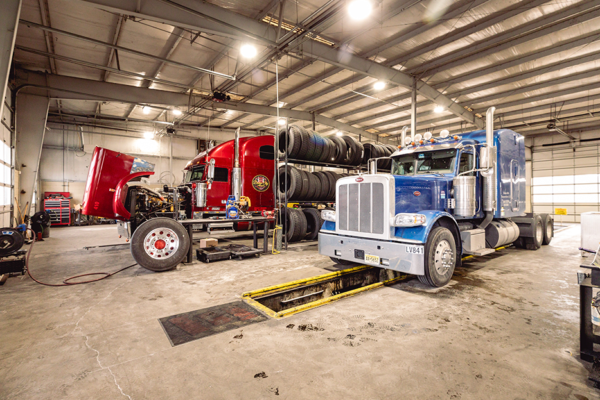Article created for the digital issue of the NATSO Foundation's magazine
The annual survey gathered ideas on the steps they take to keep drivers safe on the road.
Respondents could provide open-ended answers, and many cited preventative maintenance and pre- and post-trip inspections as top priorities. Tire management was also listed as a critical element of preventing problems later. Drivers as well as fleet owners and managers said they work to prevent unsafe emergency roadside repair situations. Company drivers said they’re drawing on remote diagnostics, thorough pre- and post-trips and regular maintenance to prevent issues. Similarly, leased owner-operators said they’re trying to keep up with regular maintenance and fix any little things at home before they become major issues out on the road.
For truck stop and travel center operators, safety is paramount.
Some roadside safety best practices shared include:
- Carry a sign that says, “emergency scene ahead.” Drivers can place it 100 yards before the site when they pull up on a truck.
- Place extra lights and strobes on the repair trucks to make sure the truck and the technician are visible.
- Create a checklist for technicians complete prior to leaving for a road call to ensure they have all of the equipment they need. Necessary equipment could include jack stands, cones, a vest.
- Use emergency lighting, cones and triangles to help improve safety.
- Ensure the technician has personal protection equipment—gloves, safety glasses, proper footwear, gloves, etc., as well as wheel chocks, jack stands, proper cleaning and inspection equipment and calibrated torque wrenches.
- Once in the bay, employee can set up aviation wheel chocks around the left front steer tire of the vehicle, which will raise the vehicle in the air preventing the customer from leaving before an employee has removed the wheel chocks. The procedure ensures that the jack isn’t left under the truck and lets the technician stand in an area where he or she can ensure the overhead is all the way up and hasn’t stopped.
Want more safety ideas to keep your roadside service technicians safe?
The NATSO Foundation and HAAS Alert, the leading innovator behind the digital alerting service and connected vehicle platform, Safety Cloud®, have a strategic partnership to significantly enhance the safety of roadside service technicians who support and repair commercial vehicles when they need to be serviced along the Interstate Highway System. HAAS Alert and the NATSO Foundation are offering a demonstration on Safety Cloud® on Thursday, May 2 at 2:00 p.m. EST (1:00 p.m. CST, 12:00 p.m. MST, 11:00 a.m. PST). Register for the demo here.
Truck stops and travel centers can learn more about the partnership at www.natso.com/HAASalert.
// This article was created for Stop Watch magazine, the magazine of the NATSO Foundation. The NATSO Foundation is the research, education and public outreach subsidiary of NATSO, Inc. The NATSO Foundation provides programs and products to strengthen travel plazas' ability to meet the traveling public's needs through improved operational performance and business planning. Visit www.natsofoundation.org for more information. (Donate to the NATSO Foundation here.)
Subscribe to Updates
NATSO provides a breadth of information created to strengthen travel plazas’ ability to meet the needs of the travelling public in an age of disruption. This includes knowledge filled blog posts, articles and publications. If you would like to receive a digest of blog post and articles directly in your inbox, please provide your name, email and the frequency of the updates you want to receive the email digest.



